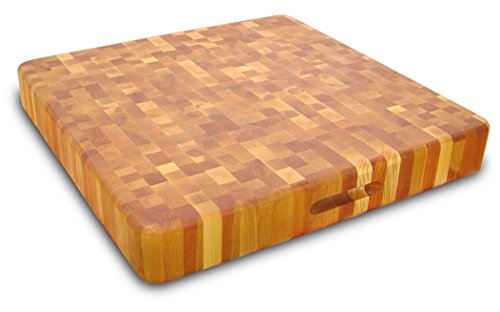
A cutting board is an essential kitchen tool for chopping, slicing, and dicing food. With so many different materials available, it can be challenging to choose the right one for your needs. In this comprehensive guide, we’ll explore the seven best cutting board materials, along with their pros and cons, to help you make an informed decision.
Introduction
The cutting board you select can significantly impact your cooking experience and the longevity of your knives. Different materials offer distinct advantages, ranging from durability to eco-friendliness. Let’s dive into the seven best cutting board materials and explore their unique features.
1. Wood
Wood cutting boards have been a classic choice for centuries, known for their durability and natural ability to resist bacteria. They are also excellent heat conductors, which helps prevent food from sticking to the surface. However, wood cutting boards require special care, as they can be more challenging to clean and maintain, and may eventually dull your knives.
2. Plastic
Plastic cutting boards are a popular option due to their ease of cleaning and maintenance. Being non-porous, bacteria cannot easily penetrate the surface, ensuring a hygienic kitchen environment. However, plastic boards can be harsh on knives and may lead to quicker wear and tear.
3. Bamboo
Bamboo cutting boards are a sustainable choice that offers both strength and lightweight convenience. They are also great heat conductors and can resist bacteria effectively. For eco-conscious individuals, bamboo is an excellent environmentally-friendly alternative.
4. Glass
Glass cutting boards are easy to clean and sanitize, as they are non-porous and non-absorbent. They boast exceptional durability, preserving the sharpness of your knives. However, be cautious, as glass can be slippery and prone to chipping or shattering if dropped.
5. Marble
Marble cutting boards are prized for their beauty and robustness. Like wood and bamboo, they are excellent heat conductors and resist bacteria effectively. Keep in mind that marble requires special cleaning care to maintain its pristine appearance and prevent knife dulling.
6. Corian
Corian cutting boards are made from synthetic materials such as acrylic and mineral compounds. They are highly durable and easy to clean, offering a hygienic surface for food preparation. However, Corian boards can be more expensive than other materials.
7. Rubber
Rubber cutting boards are flexible and non-slip, ensuring stability during use. They are easy to clean and maintain while also being heat conductors and bacteria resistant. Be mindful that rubber boards can be more likely to cause knife scratches.
Which Cutting Board Material is Right for You?
The ideal cutting board material for you will depend on your unique preferences and needs. If durability and easy cleaning are your top priorities, plastic or glass cutting boards may be excellent choices. For those seeking eco-friendly options, bamboo cutting boards are a sustainable alternative. If beauty and durability are key factors, marble cutting boards may be the perfect fit.
No matter which material you choose, remember to clean your cutting board regularly to prevent the spread of bacteria and maintain its longevity.
Additional Tips for Choosing a Cutting Board
Consider these essential factors when selecting a cutting board:
- Size and Shape: Choose a cutting board that accommodates the foods you typically chop without being too unwieldy.
- Non-Slip Surface: Opt for a board with a non-slip surface to prevent accidents and maintain stability during food preparation.
- Ease of Cleaning: Look for cutting boards that are easy to clean either by hand or in the dishwasher for convenience.
- Price: Cutting boards come in a wide range of prices, so choose one that fits your budget without compromising quality.
The Best (and WORST) Cutting Boards for Home Kitchens
FAQs
Q: Which cutting board material is the most durable?
A: Wood, bamboo, and glass are among the most durable cutting board materials.
Q: Can I use a wooden cutting board for meat and vegetables?
A: Yes, wood is safe for both meat and vegetable preparation. However, clean it thoroughly between uses to prevent cross-contamination.
Q: Are bamboo cutting boards better for the environment than plastic ones?
A: Yes, bamboo cutting boards are more eco-friendly as bamboo is a renewable and sustainable resource.
Q: Can glass cutting boards damage my knives?
A: No, glass cutting boards are gentle on knives and do not cause excessive wear.
Q: How often should I replace my cutting board?
A: Replace your cutting board if it shows signs of deep grooves, cracks, or excessive wear, or at least every two to three years for optimal hygiene.
Q: Are rubber cutting boards dishwasher safe?
A: Yes, most rubber cutting boards are dishwasher safe for easy cleaning.
Conclusion
Selecting the right cutting board material is essential for your kitchen. Each material offers unique advantages, and your choice will depend on your priorities. Whether you opt for wood, plastic, bamboo, glass, marble, Corian, or rubber, maintaining a clean and hygienic cutting board will ensure safe and enjoyable food preparation experiences in your kitchen.






